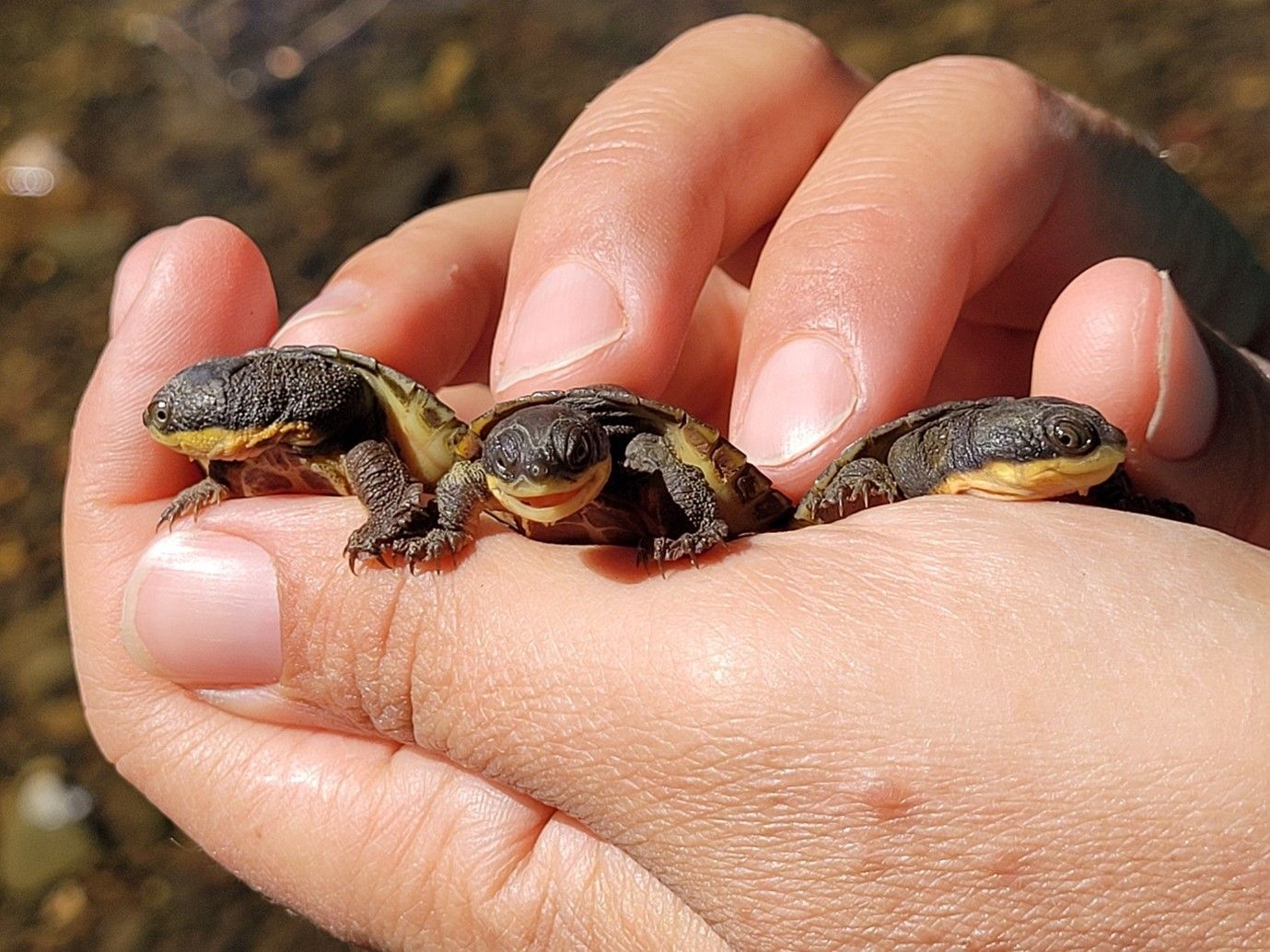RESSEARCH &
INVESTIGATIONS
WITH REDLEAF GROUP
Case Study: Comprehensive Research and Conservation
Efforts for the Manning River Helmeted Turtle

Engagement and Seasonal Surveys
Redleaf Group was commissioned by the NSW Hunter Local Land Services to conduct extensive surveys between 2018-2023 to assess the endangered Manning River Helmeted Turtle (Myuchelys purvisi) within the Manning River Catchment.
THE URGENT NEED FOR ONGOING RESEARCH
Myuchelys purvisi, an endangered and endemic freshwater turtle exclusive to the Manning River catchment, faces critical challenges. Droughts, fires, floods, and a reduction in survey initiatives have collectively exacerbated habitat degradation, diminishing our ability to monitor and assess this species effectively.
While past surveys, coordinated by the Office of Environment & Heritage (OEH), have established a population baseline, continued research is essential to comprehend
M. purvisi's
distribution, threats, and management needs. This data serves as the foundation for site-specific conservation actions, informs changes in threat status management, and guides future monitoring efforts.
PROJECT SCOPE: SURVEY AND ANALYSIS
The project's scope encompassed comprehensive surveys of M. purvisi freshwater turtles, employing a combination of trapping and snorkelling techniques tailored to site conditions. All captured turtles underwent measurement processing and were recorded following standardised pro-forma, consistent with previous surveys and Biodiversity and Conservation Division (DPIE) guidelines. Scute marking, guided by pre-established schemas from the Biodiversity, Conservation Division, ensured consistency with previous surveys.
DETAILED SITE DESCRIPTIONS AND THREAT ASSESSMENT
Physical site descriptions, including pool dimensions, in-stream habitat features, and water temperature, were meticulously documented. Observations assessed the presence of threats detrimental to M. purvisi's persistence at each site. Key sites were identified for bank stabilisation, stock exclusion, rehabilitation/weed control, and habitat protection, alongside the identification of fire-related impacts.
UNLOCKING SECRETS OF HATCHLINGS
The capture of wild hatchlings, mere days after hatching, offered a rare glimpse into the cryptic behaviour of these vulnerable young turtles. Their consistent presence on cobble bars in warm, shallow waters suggests a preference for safety from instream predators and abundant foraging opportunities. Their camouflaged bodies still blend seamlessly with their surroundings.
POTENTIAL NESTING HABITAT INSIGHTS
Many surveyed locations indicated potential nesting habitat. While not confirmed through observed data, these areas, characterised by Casuarina sandy loam soil benches with partial shading and open sandy bars, represent promising sites for future monitoring efforts. Wildlife cameras should be deployed to monitor nesting turtles, hatchling emergence, and predator interactions. Data from this initiative will guide ground-level conservation actions and resource allocation.
KEY RECOMMENDATIONS FOR THE FUTURE
Based on the collected information, several critical recommendations are proposed:
• Continue gathering baseline data on population demographics, including size, structure, and sex ratios.
• Expand survey efforts to new areas or locations with limited previous examination.
• Conduct mark-recapture surveys to establish long-term population trends.
• Undertake dietary analysis across life history size classes to understand nutritional needs.
• Perform genetic studies to assess genetic diversity within M. purvisi.
• Investigate the potential hybridization with Emydura macquarii within the Manning River.
• Research the reproductive biology of M. purvisi, including nesting habits, predation rates, and fecundity assessments.
• Complete eDNA surveys in previously surveyed locations to complement traditional survey results.
This comprehensive research and conservation project underscore the critical importance of ongoing efforts to safeguard the Manning River Helmeted Turtle and its unique ecosystem.
